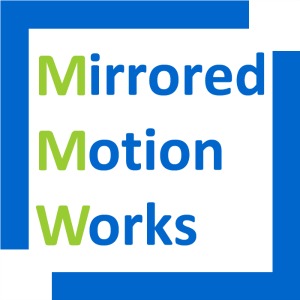Publications can be accessed by clicking on the links following each citation.
Research Underlying MMW’s Approach to Therapy
Mirror therapy
Pérez-Cruzado D, Merchán-Baeza JA, et al. Systematic review of mirror therapy compared with conventional rehabilitation in upper extremity function in stroke survivors. Aust Occup Ther J. 2017;64(2):91-112. Link Perez-Cruzado.
Piron L, Turolla A, et al. Exercises for paretic upper limb after stroke: a combined virtual-reality and telemedicine approach. J Rehabil Med. 2009;41(12):1016-102. Link Piron.
Thieme H, Morkisch N, et al. Mirror therapy for improving motor function after stroke. Database Syst Rev. 2018;11;7. Review. Link Thieme.
Zeng W, Guo Y, et al. Mirror therapy for motor function of the upper extremity in patients with stroke: A meta-analysis. J Rehabil Med. 2018;50(1):8-15. Link Zeng.
Video gaming and virtual reality
Finley M, Combs S. User perceptions of gaming interventions for improving upper extremity motor function in persons with chronic stroke. Physiother Theory Pract. 2013;29(3):195-201. Link Finley.
Henderson A, Korner-Bitensky N, Levin M. Virtual reality in stroke rehabilitation: a systematic review of its effectiveness for upper limb motor recovery. Top Stroke Rehabil. 2007;14(2):52-61. Link Henderson.
Schuster-Amft C, Henneke A, et al. Intensive virtual reality-based training for upper limb motor function in chronic stroke: a feasibility study using a single case experimental design and fMRI. Disabil Rehabil Assist Technol. 2015;10(5):385-92. Link Shuster-Amft.
Wiemeyer J, Deutsch J, Malone LA, et al. Recommendations for the optimal design of exergame interventions for persons with disabilities: challenges, best practices, and future research. Games Health J. 2015;4:58–62. Link Wiemeyer.
Real-time feedback (error correction)
Chen JL, Fujii S, Schlaug G. The use of augmented auditory feedback to improve arm reaching in stroke: a case series. Disabil Rehabil. 2016;38(11):1115-1124. Link Chen.
Giggins OM, Persson UM, Caulfield B. Biofeedback in rehabilitation. J Neuroeng Rehabil. 2013;10:60. Link Giggins.
Shin J, Chung Y. Influence of visual feedback and rhythmic auditory cue on walking of chronic stroke patient induced by treadmill walking in real-time basis. NeuroRehabilitation. 2017;41(2):445-452. Link Shin.
van Gelder L, Booth ATC, et al. Real-time feedback to improve gait in children with cerebral palsy. Gait Posture. 2017 ;52:76-82. Link van Gelder.
Accurate repetition while minimizing abnormal movement
Kwakkel G, van Peppen R, et al. Effects of augmented exercise therapy time after stroke: a meta-analysis. Stroke. 2004; 35(11):2529-39. Link Kwakkel.
Langhorne P, Bernhardt J, Kwakkel G. Stroke rehabilitation. The Lancet. 2011;377(9778):1693–1702. Link Langhorne.
Oujamaa L, Relave I, et al. Rehabilitation of arm function after stroke. Literature review. Annals of Physical and Rehabilitation Medicine. 2009; 52(3):269–293. Link Oujamaa.
Richards LG, Stewart KC, et al. Movement-dependent stroke recovery: a systematic review and meta-analysis of TMS and fMRI evidence. Neuropsychologia. 2008; 15;46(1):3-11. Link Richards.
Veerbeek JM, van Wegen E, et al. What is the evidence for physical therapy poststroke? A systematic review and meta-analysis. PLoS One. 2014; 4;9(2):e87987. Link Veerbeek.
Bimanual Therapy
Byblow WD, Stinear CM, et al. Mirror symmetric bimanual movement priming can increase corticomotor excitability and enhance motor learning. PLoS One. 2012;7(3):e33882. Link Byblow.
Cardoso de Oliveira S, Gribova A, et al. Neural interactions between motor cortical hemispheres during bimanual and unimanual arm movements. Eur J Neurosci. 2001; 14: 1881-1896. Link Cardoso.
Cauraugh JH. Coupled rehabilitation protocols and neural plasticity: upper extremity improvements in chronic hemiparesis. Restor Neurol Neurosci. 2004;22:337-347. Link Cauraugh 1.
Cauraugh JH, Coombes SA, et al. Upper extremity improvements in chronic stroke: coupled bilateral load training. Restor Neurol Neurosci. 2009;27(1):17-25. Link Cauraugh 2.
Gandolfi M, Formaggio E, et al. Quantification of upper limb motor recovery and EEG power changes after robot-assisted bilateral arm training in chronic stroke patients: A prospective pilot study. Neural Plast. 2018; 8105480. Link Gandolfi.
Kantak S, Jax S, Wittenberg G. Bimanual coordination: A missing piece of arm rehabilitation after stroke. Restor Neurol Neurosci. 2017;35(4):347-364. Link Kantak.
Lee MJ, Lee JH, et al. Effectiveness of bilateral arm training for improving extremity function and activities of daily living performance in hemiplegic patients. J Stroke Cerevasc Dis. 2017;26:1020-1025. Link Lee.
Neva JL, Legon W, Staines WR. Primary motor cortex excitability is modulated with bimanual training. Neurosci Lett. 2012;514:147-151. Link Neva.
Stewart KC, Cauraugh JH, Summers JJ. Bilateral movement training and stroke rehabilitation: a systematic review and meta-analysis. J Neurol Sci. 2006; 244:89-95. Link Stewart.
Stinear CM, Barber PA, et al. Priming the motor system enhances the effects of upper limb therapy in chronic stroke. Brain. 2008;131:1381-90. Link Stinear 1.
Stinear JW, Byblow WD. Disinhibition in the human motor cortex is enhanced by synchronous upper limb movements. J Physiol. 2002; 543:307–316. Link Stinear 2.
Surkar SM, Hoffman RM, et al. Hand-arm bimanual intensive therapy improves prefrontal cortex activation in children with hemiplegic cerebral palsy.Pediatr Phys Ther. 2018;30(2):93-100. Link Surkar.
Waller SM, Forrester L, et al. Intracortical inhibition and facilitation with unilateral dominant, unilateral nondominant and bilateral movement tasks in left- and right-handed adults. J Neurol Sci. 2008; 269:96–104. Link Waller.
Whitall, J., Waller SM, et al. Bilateral and unilateral arm training improve motor function through differing neuroplastic mechanisms: a single-blinded randomized controlled trial. Neurorehabil Neural Repair. 2011; 25: 118-129. Link Whitall.
